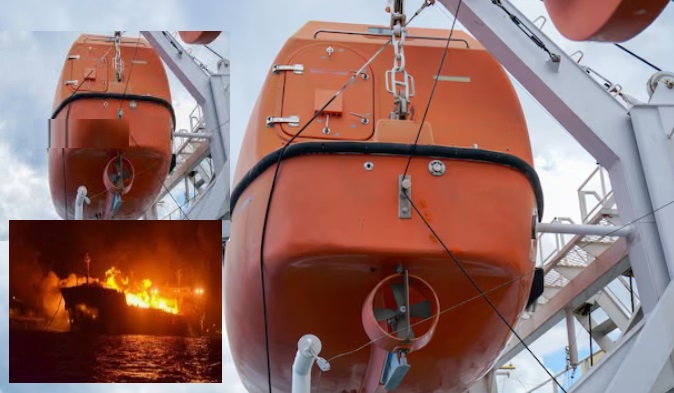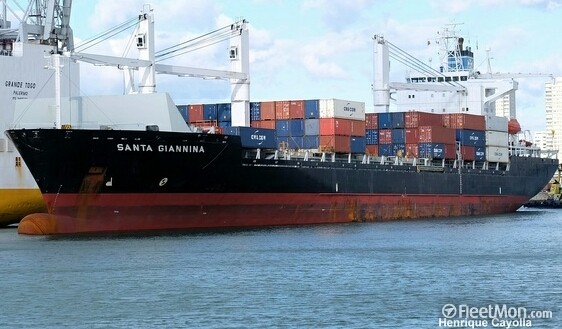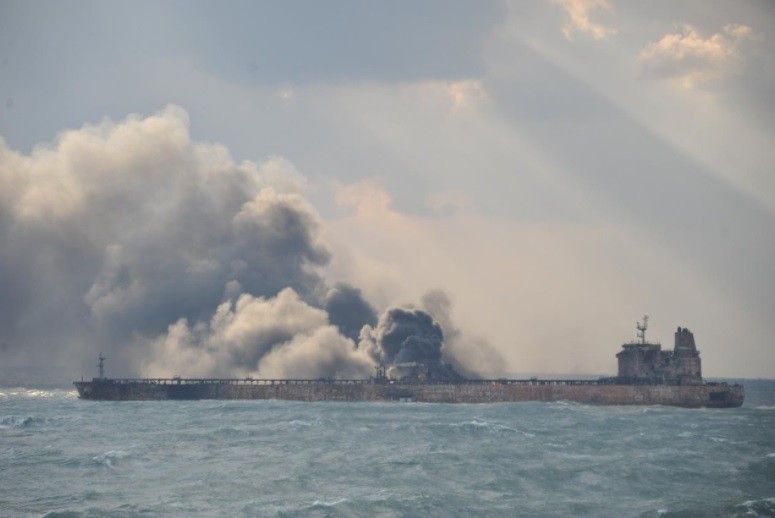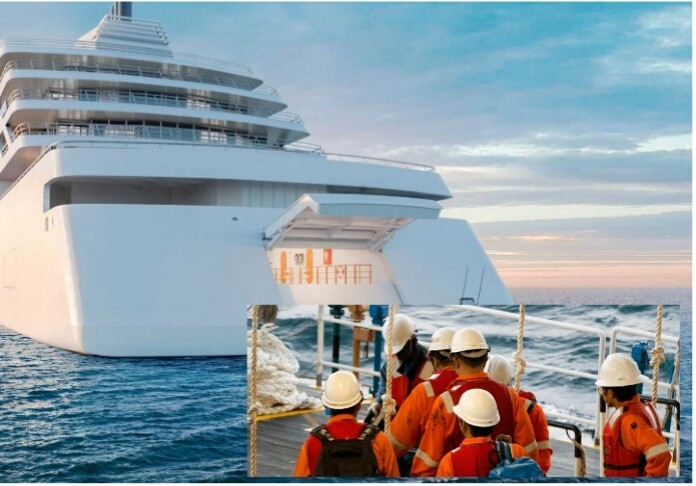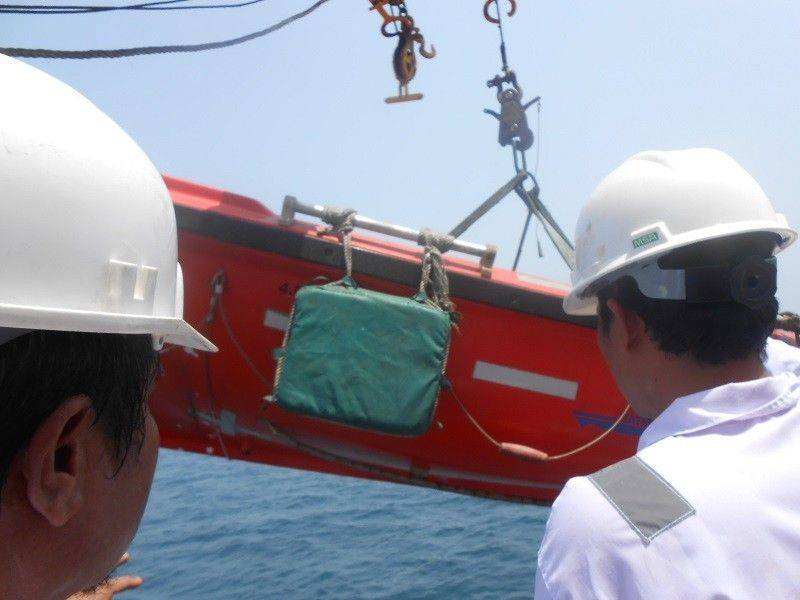Training program “Specialist in lifeboats, rescue rafts and rescue boats other than fast rescue boats” contains mandatory minimum requirements for certification specialists in lifeboats, liferafts and duty officers boats other than fast rescue boats as defined in Rule VI/2 of the STCW Convention. Competence, according to specification, presented in Table A-VI/2-1 of the STCW Code should be sufficient to launching and commanding a lifeboat, life raft or a rescue boat in emergency situations, as well as control of the boat on oars, power driven, use of inflatable lifeboat raft Students must know how to properly use life-saving equipment supplies and equipment, as well as actions to be taken to saving lives.
Emergency situations.
Intensification of shipping increases tension on waterways and complicates navigation conditions, which leads to transport fleet accidents with particularly severe economic and environmental consequences.
Accidents involving ships at sea are classified according to PRAS – 09 as:
– accidents;
– very serious accidents;
– incidents.
An accident with a vessel at sea is considered an accident if it occurs an event or series of events that occurred in direct connection with the operation of the ship and entailed:
✓death of a person or causing him serious bodily harm;
✓disappearance of a person from a ship;
✓the loss of a ship, the expected loss of a ship or the abandonment of a ship;
✓damage to the vessel;
✓landing the vessel on the ground or depriving it of the ability to move, or
participation of a vessel in a collision;
✓damage to marine infrastructure outside the vessel, which
may seriously endanger the safety of the ship itself, another ship or
an individual or the safety of navigation;
✓serious damage to the environment or possible serious damage
environment caused by damage to a ship or ships. A ship accident at sea is considered a very serious accident in if there was an event or a series of events that occurred in direct connection
with the operation of the vessel and resulting in the complete loss of the vessel or the death of a person or causing serious damage to the environment. An accident with a vessel at sea is considered an incident if there was an event or series of events, other than a maritime casualty, that occurred in direct connection with the operation of the vessel, which threatened or without being prevented, could threaten the safety of the ship and the people on it or any other person or the environment.
List of accidents that can lead to abandonment of the ship:
– fire;
– collision;
– grounding;
– explosion;
– harmful effects of hazardous substances or dangerous cargo;
– movement of the load (displacement);
– flooding.
In the event of a fire on a ship, it is prudent to lower some or all of the life-saving equipment.
boats (rafts) immediately and keep them ready if the fire continues.
Alarm schedule and instructions in case of an emergency.
Description of ship alarms, as well as actions of crew members and passengers by these signals, including:
closing waterproof and fireproof doors, valves,
scuppers, portholes, skylights and other similar openings on the vessel;
replenishment of supplies in lifeboats, life rafts and other
life-saving equipment;
preparation and launching of lifeboats and rafts;
general training of other life-saving appliances;
collection of passengers; use of communication means.
Ship alarms and signals:
The following types and signals of alarms are installed on the ship :
1 General alarm (firefighting, waterfighting) –
seven or moreshort sounds followed by one long sound, signal repeated 3 – 4 times. In the event of a fire while staying in a port, a general ship signal alarm is additionally accompanied by frequent ringing of the ship’s bell; 2 “Man overboard” – three long signals with a loud chime
(signal duration 5 – 6 seconds), the signal is repeated 3 – 4 times; 3 Boat alarm – seven short and one long signal with a loud bell, the signal is repeated 3 – 4 times.
Alarm signals are duplicated by voice over the broadcast indicating the type of alarm. On passenger ships, when there are foreign passengers, alarm signals
duplicated in the relevant foreign languages. In case of a hole or leak gas or fire, its location is indicated (if possible). If the loud chime bell fails, the signals are sent by steam whistle, typhon or siren. The alarm is cleared by voice over the broadcast.
Having heard the ship’s alarm signals, the actions of the crew members and passengers these signals include:
✓ closing waterproof and fireproof doors, valves, scuppers, portholes, skylights and other similar openings on a ship;
✓ replenishment of supplies in lifeboats, life rafts and other life-saving equipment;
✓ preparation and launching of lifeboats and rafts;
✓ general training of other life-saving equipment;
✓ collection of passengers;
✓ use of communication means;
✓ completing emergency fire-fighting parties;
✓ special duties related to the use of fire fighting equipment equipment and systems.
Safety Management and Survival Principles:
✓ training camps and exercises. Knowledge eliminates panic and confusion.
✓ preparedness for any emergency.
✓ knowledge of the actions that must be taken:
✓ when called to gathering places;
✓ if necessary, leave the ship;
✓ when in water;
✓ while in a life-saving device.
✓ knowledge of the main dangers for victims.
Safety management on board the ship should be organized in accordance with the requirements of the International Management Code safety (ISM Code). The ISM Code was developed by the IMO as a standard for establishing a system for the safe management and operation of ships and to prevent sea pollution.
Based on the ISM Code, each Company, each ship must have The Ship Safety Management System, which is part of organizational structure and ensuring control of responsibility, procedures, resources and operations on board the ship to ensure they compliance with rules and regulations, as well as applicable codes, guidelines and standards.
Objectives of the safety management system:
- safe performance of operations under normal and non-standard conditions;
- maintaining the proper condition of the vessel and equipment;
- maintaining the ability to control in emergency situations;
- safe working methods and conditions;protection against all identified types of risk;
- continuous improvement of qualifications and experience related to SMS shore and ship personnel.
Basic principles of survival:
✓ Everyone on board the ship must know that the likelihood of an accident is not
excluded, but at the same time must be ready for clear, deliberate actions.
✓ Panic and the accompanying fear and despair are the main causes of death in a ship disaster. Knowledge eliminates panic and mess.
✓ Warm clothing creates conditions for the survival of people in lifeboats at low temperatures and strong winds.
✓ When jumping from the sides into the water, people expose themselves to bodily harm damage, which dramatically reduces the time spent in water. If possible, you should try to land on a raft (boat), not when entering the water, since dry clothes provide better protection from the cold. If you have to jump straight into the water, make sure the life jacket is securely fastened. If It is put on correctly, it allows you to jump from a height of 4.5 meters above the water level. For when jumping, use the following technique:
- connect your knees and keep your legs slightly bent;
- close your nose and mouth with one hand;
- with the other hand, firmly grab the vest, placing your hand under the armpit, blocking it with your elbow this way the vest will not rise up and cover your head. If collective life-saving equipment is not available, at night it is necessary activate the light bulb built into the vest by pulling out two plugs from batteries; in the afternoon, when you hear the noise of an airplane, open the packet of soluble dye (uranine), check the action of the whistle. After boarding the raft (boat), the following must be done:
actions:
✓ help others climb onto the raft (boat);
✓ collect objects floating on the water, which can later help you help while waiting for help;
✓ close the safety valves with special plugs;
✓ check possible losses;
✓ open the package with standard raft equipment to check it content;
✓ begin treatment of the wounded and calm down the discouraged;
✓ dry the insides of the raft as best as possible;
✓ lower a floating anchor into the water, which will allow you to move away from it more slowly

